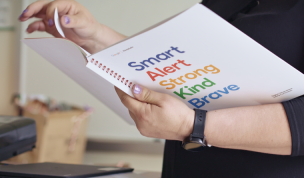Alcohol, Schoolies And Setting Limits With Our Teens

Research tells us clearly that teens and alcohol don't mix.
- One in five teens injure themselves while drunk.
- The earlier our kids start drinking, the greater the risk of alcohol problems later in life.
- One in ten teens has a regrettable sexual experience related to alcohol consumption.
- Early consumption of alcohol can impact on brain development.
Given the dangers of alcohol, particularly for teenagers, and the regular news stories describing out-of-control teens, it is a good news day when data points to reductions in teen drinking.
What the data tells us
The Australian Secondary Students’ Alcohol and Drug Survey (ASSAD) highlighted that drinking among 12-17 year-olds fell from 29% in 2002 to 11% in 2011 and lower again, to 8% in 2014 (when asking about past-week consumption). It’s worth pointing out that while our alcohol consumption is dropping, so too are youth use of tobacco and illicit drugs on average.
Research, published in the scholarly journal, Addiction, shows that the trend is continuing and has been found to be true in multiple areas. In this research, participants were asked if they had consumed alcohol in the previous 12 months – certainly a much clearer indication of drinking behaviour than the ASSAD report which considered only the past week. The data told the following story:
- Overall alcohol abstinence for 14-17 year-olds increased from 32.9% in 2001 to 50.2% in 2010.
- The pattern of alcohol abstinence improvements was consistent for both male and female respondents.
Why is this happening?
The research suggests three key reasons for the shift in the change towards tee-totalling among our youth:
1. There are strong social concerns about alcohol and young people. With regular stories in the news about “alcohol-fuelled violence”, or schoolies who fall from balconies, there seems to be a strong social push to emphasise the dangers of alcohol, and the need to restrict its availability.
2. Some data points to new technologies and leisure pursuits pulling teens away from the bottle. If our kids are spending 3-6 hours a day playing games and interacting with their devices, they have less time for drinking.
3. As Australia’s population becomes increasingly diverse, some researchers suggest that the cultural norms of our population are shifting, with youth raised by parents from non-drinking (or lighter-drinking) cultures following the examples of their parents.
Is it all good news?
If the data are accurate, we are seeing a positive public health change occurring in our youth, making them healthier and safer than previous generations. Among the stories that society is falling
apart, this is wonderful news. This research gives us glimmers of hope, and suggests that in most cases, the kids are alright.
But there is more work to do, Don’t turn a night out into a nightmare, highlighted that:
- Approximately 40% of 14 – 19 year olds drink at levels that risk harm in the short term like accident and injury.
- The pattern doesn’t stop there. young people aged 18 – 24 years have the riskiest drinking patterns with almost two-thirds drinking at a risky or high-risk level for harm in the short term
What can we do to help our children?
Talk to them. Have honest, trust building conversations.
Finally, make sure that they absolutely know that they can call if they’re in trouble and you will help them. You may not save them from all of the consequences of foolish actions, but if they are in genuine need, you’ll be there.









